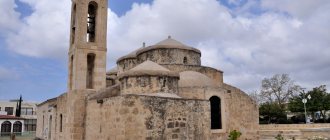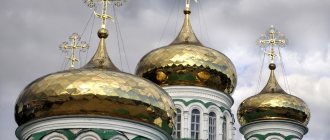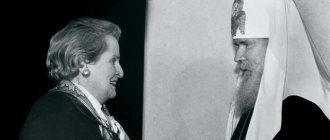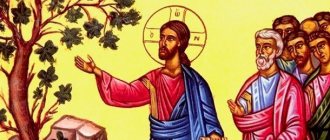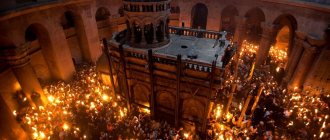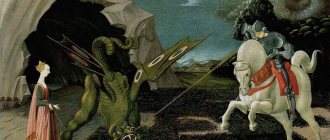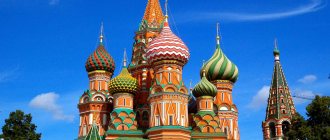One day, the emperor's executioners tried to force Saint Victor to eat poisoned meat. But Victor just crossed him and ate him. This happened in front of many people. Everyone saw that he remained completely unharmed. When the sorcerer saw this, he was greatly surprised by the miracle he saw, that he believed in Christ.
Saint Victor is an early Christian saint who is venerated by the Russian Orthodox Church. Saint Victor's Day is celebrated on May 11th.
Saint Victor of Damascus was a warrior under Emperor Mark
Holy Martyr Victor of Damascus served as a soldier under Emperor Marcus Aurelius
The holy martyr Victor of Damascus served as a soldier under the emperor Marcus Aurelius. It was 161 years old. Victor himself was from Italy itself. When the emperor ordered his soldiers to persecute all Orthodox Christians, everyone began to demand that Victor renounce the Lord. He was also asked to make a sacrifice to the idol.
The emperor told him that he must carry out all his orders, since he was the king’s warrior. But Victor did not want to sacrifice to the pagan gods, much less renounce the Lord. Then Victor told the emperor that he was now a warrior of the Heavenly King, and would serve only him. But governor Sebastian did not listen to this, he betrayed Victor to be tortured.
Persecution of Christians in Ancient Rome under Marcus Aurelius
First, the executioners broke all his fingers and toes, and then twisted his joints. During his terrible torture, the Great Martyr Victor prayed to the Lord and courageously tried to endure all the suffering.
Afterwards, the executioners tried to force Victor to eat poisoned meat. But Victor only crossed the meat and swallowed it. This happened in front of many people. Everyone saw that he remained completely unharmed. When the sorcerer who poisoned this meat saw this, he was greatly surprised by the miracle he saw.
He could not believe that Victor had not suffered at all from the poison. After which he believed in Christ, the True God. After all, he understood better than anyone that no earthly force could neutralize such a strong poison.
In front of everyone, Saint Victor performed a miracle, after which even the sorcerer accepted faith in Christ
Prayer to the icon of St. Victor text
Every Orthodox Christian knows and venerates many saints. Prayer to the Lord Jesus Christ and His Most Pure Mother is a common petition that accompanies the life of a believer. They pray to spiritual patrons - saints.
Your martyr, Lord, Victor,/ in his suffering will receive an imperishable crown from You, our God:/ having Your strength,/ overthrow the tormentors,/ crush the demons of weak insolence./ Pray to him. tvami // save our souls.
Oh, holy servant of God, martyr Victor! Having fought a good fight on earth, you received in Heaven the crown of righteousness, which the Lord has prepared for all who love Him. Moreover, looking at your holy image, we rejoice at the glorious end of your life and honor your holy memory. But you, standing before the Throne of God, accept our prayers and bring them to the All-Merciful God, to forgive us every sin and help us to stand against the wiles of the devil, so that we may be freed from sorrows, illnesses, troubles and adversity and all evil, let us live piously and righteously in the present and through your intercession we will be worthy, even though we are unworthy, to see good on the earth of the living, glorifying the One in His saints, glorifying God, the Father and the Son and the Holy Spirit, we not and forever and ever. Amen
The life of Saint Victor says that one day a woman stood up for him
But it didn't end there. The life of Saint Victor says that he was given over to new torments. The wife of one of the warriors could no longer see how Victor was being bullied and what he had to endure. She began to intercede for the saint.
But the executioners became so angry that they saw an enemy in the wife of their own comrade. They were so maddened by blood that they grabbed the woman and tied her to two palm trees, after which they tore her to pieces. The girl was only fifteen years old, she was still very young. This is how she ended her earthly life.
After killing the girl, the soldiers went over to Victor. Deciding that no amount of torture would help get rid of the saint, they beheaded him. Before his death, Victor predicted a quick death for the executioners. He also predicted the death of the governor in 24 days. That's how it all happened.
Icon Victor of Corinth
Victor of Corinth was among the 23 disciples of the hermit Codratus who suffered for their faith. Victor lived in the 3rd century in the city of Corinth. Having learned that a Christian Kodrat, who grew up and matured alone in the wilderness, was preaching not far from the city, Victor hurried to meet him. There he was baptized and believed in the Christian faith. By this time, the local ruler had learned of their whereabouts, and he ordered the arrest and imprisonment of Kodrat and his students, among whom was Victor. In prison, Kodrat and his followers were mercilessly tortured, forcing them to renounce their faith. And not one of his followers recanted. Then the ruler ordered Victor and other students of Kodrat to be thrown into a pit among hungry animals. The animals did not touch them. The wounded ruler ordered the Christians to be tied to chariots and dragged around the city until they renounce Christ. The faith of Victor and other Christians was strong: none of them denied. Then the enraged ruler ordered their heads to be cut off.
Saint Victor of Damascus has an icon
Victor Damaskin has an icon. It shows Victor as a young man. On his face you can see a small round beard and dark hair. The saint is dressed in a tunic and cloak. In his left hand he holds a sword, and in the other a cross.
Icon of Saint Victor
There are other options for icons. On some icons, Saint Victor is depicted with a cross in one hand, and his other hand is at his chest.
Temple
Where can you pray to your patron saint Victor? In Kotelniki (Moscow region), ten years ago a temple was built in honor of the martyr. Divine services are held there, and the temple itself is open daily. The main shrine is a particle of the relics of the martyr Victor.
The temple is located at the address: Kotelniki, Belaya Dacha microdistrict, 1st Pokrovsky passage, building 8.
Sunday liturgy in the church begins at 8 o'clock. Confession is at 7:30 am.
What do they pray to Viktor Matveev for?
The life of Viktor Matveev speaks of him as a reasonable and calm person. The martyr believed that prayer can help in all troubles. During his life, he was respected among the local people, was characterized by endurance, and could conquer more mountains. That is why with Victor they symbolize calm and tranquility.
According to the recollections of local residents who lived in the cell for some time, Victor went to pray in a small pit not far from the dwelling. Some of his guests watched how the martyr seemed to float in the air during prayer.
They pray to Viktor Matveev in difficult life situations, when emotions and thoughts do not allow them to concentrate on solving the problem. They ask Viktor Matveev for calmness of thoughts, prudence and hints in the right decision.
Saint Stephenida
Speaking about Saint Victor, one cannot help but talk about another saint. Victor's execution marked the beginning of her martyrdom.
A young girl named Stefanida was a Christian. Despite her very young age (15 years), she was married to one of Sebastian’s warriors for more than a year. Stefanide had a vision during Victor's execution. Two angels with two martyr's crowns descended from heaven. One is larger for Victor, and the second is smaller. It was intended for Stefanida.
Seeing this, the girl began to glorify the martyr Victor in a loud voice. Her words reached the governor. He ordered Stefanida to be brought. And he began to persuade him to renounce Christ, to regret his youth and beauty, to make a sacrifice to the pagan gods for the sake of his pardon.
Stefanida was adamant. She openly testified to the governor about her faith, denouncing the pagan gods. And then Sebastian ordered the girl to be executed. The method of execution was terrible. She was tied to two bent palm trees. One foot to one, the other to the other. And the palm trees were released. Stefanida was torn in two. This is how the young martyr received her crown, having suffered for her faith.
VICTOR
[lat. Victor; Greek Βίκτωρ] (II century), martyr. (memorial on November 11, memorial on May 14). Christian warrior V. served in Rome. army under the command of dux (or comite) Sebastian. When the persecution of Christians began, he was called to the military commander and ordered to make sacrifices to the pagan gods. V. refused and was tortured, he was thrown into a red-hot oven and left there for 3 days, but the martyr remained unharmed. Then he was forced to eat poisoned meat, but the poison had no effect, and the sorcerer who prepared the potion believed in Christ. After this, V. was subjected to even greater torture: they pulled out his veins, threw him into a cauldron of boiling oil, hung him on a tree and scorched his body with candles, poured ashes mixed with vinegar into the martyr’s mouth. Then they gouged out his eyes and hung him upside down, while the warriors who blinded him themselves lost their sight, but later. were healed through the prayer of the saint. Having learned about this, Sebastian ordered his skin to be torn off. A Christian woman named Stefanida, who was present at his suffering, saw 2 radiant crowns descending from heaven and openly confessed Christ. She was executed by order of the military leader, and V.’s head was cut off. Before his death, V. predicted the death awaiting his tormentors, which soon came true. When V. was beheaded, a miracle happened: blood and milk flowed from his body.
Mch. Victor. Painting of St. Sophia Cathedral in Kyiv. 1st half XI century Mch. Victor. Painting of St. Sophia Cathedral in Kyiv. 1st half XI century
V.’s life has been preserved in Greek, Latin, and Coptic. languages. The texts contain significant discrepancies regarding the time of life and place of death of the martyr. According to Lat. sources (BHL, N 8559-8563), V. came from Cilicia (M. Asia), according to Greek. version (BHG, N 1864) - he was from Italy. According to Lat. and Greek Lives, V. suffered during the reign of the emperor. Antonina Pius (138-161), according to Copt. Lives - in the persecution of the imp. Diocletian (BHO, N 1242-1244), according to most historians, under the emperor. Marcus Aurelius (161-180).
The place of martyrdom is extensive in Greek. Lives consider Damascus, and short synaxarities - Italy (Menology of Basil II - PG. 117. Col. 154), Copts - Antioch in Syria or Antinous of Egypt, most Lat. sources - Alexandria, some later ones - Sicily or Marseille (mixing V. with Victor, Martyr of Marseille).
Mch. Victor. Painting c. Panagia Arakos in Cyprus. 1192
Mch. Victor. Painting c. Panagia Arakos in Cyprus. 1192
Some researchers suggest that there were 2 martyrs of the same name, one suffered in Syria, the other in Egypt, and that at a certain stage there was a merger of the cult of V. and Victor, Egypt. martyr Dr. scientists believe that V. suffered martyrdom in Egypt, but his veneration was so widespread in Antioch that a legend arose about his sire. origin. There is also an opinion that other versions are based on Greek. life (BHG, N 1864) or its prototype, compiled in the 3rd-4th centuries, according to Krom V. suffered torment in Syria (Lucchesi. Col. 1291-1292).
V.'s memory is celebrated in Greek. calendars 11 Nov. (in some Byzantine synaxarions 10 or 12 November), in lat. monuments, in addition to the generally accepted holiday of May 14, also April 24. (BHL, N 8559), 11 Jan, 20 Feb, 23 Apr. and May 8 (MartHieron. P. 36, 106, 169, 205-206, 240, 253, 289), April 1. (MartRom. P. 120, 188).
Information regarding V.’s relics is also contradictory. In the Synaxar of Alexandria on November 23. it is reported about the consecration in Antioch of a church built in honor of V., on the site where his body was buried (Syn Alex. 1922. T. 18. Fasc. 1. P. 157-159). In the 12th century in the K-Polish center Vmch. Mina, near Mangan, the relics of the martyrs V. and Vincent were kept (Description of the shrines of the K-field in a 12th-century lat. manuscript // The miraculous icon in Byzantium and Ancient Rus'. M., 1996. P. 443). In Rome, part of V.'s relics was kept in the church. St. Pancratius, in 1697 they were transferred to the Carmelite monastery of Santa Lucia alle Bottege Oscure, and then to the church. Saints Marcellinus and Peter. Since 1906, V.’s relics have been located in Fano, Italy.
Source: BHL, N 8559-8563; BHG, N 1251-1252, 1864-1865; BHO, N 1242-1244; ActaSS. Apr. T. 3. P. 265; ActaSS. Mai. T. 3. P. 266-268; PG. 115. Col. 257-268 [Greek life of V.]; JSV. November. pp. 217-222; Budge EA Coptic Martyrdoms. L., 1914. P. 1-45 [Copt. V.'s torment]; Martyrius St. Victor // Sayings of the Egyptian Fathers: Monuments of Coptic literature. language. St. Petersburg, 2001, pp. 263-286.
Lit.: Sergius (Spassky). Monthsword. T. 3. P. 465; Delehaye H. Les Martyrs d'Égypte // AnBoll. 1922. Vol. 40. P. 32-34, 67, 70, 96, 98, 118-119, 121, 123, 151; ΘΗΕ. Τ. 3. Σ. 897; Σωφρόνιος (Εὐστρατιάδης).
῾Αγιολόγιον. Σ. 81; Sauget J.-M. Vittore il Generale // BiblSS. Vol. 12. Col. 1258-1260; Lucchesi G. Vittore e Corona // Ibid. Col. 1290-1292; Keller K. Victor der Sieger: Zur Verehrung von frühchristl. Märtyrern mit Namen Victor // Hermeneia. 1996. N 12.
Iconography
Byzantine monuments. the circle is represented by a young dark-haired martyr or medieval man with a short round beard; dressed in a tunic and cloak; holding a cross in his hand. In Erminia Dionysius Furnoagrafiot, beginning. XVIII century, about V. it is said: “Young man without a beard” (Part 3. § 10. No. 10). As a young martyr V. is presented: in the New Church. Tokali Kilise in Goreme (Cappadocia), con. X century; in the Minology of Basil II (Vat. gr. 1613. fol. 174, 976-1025); in the katholikon of the Hosios Loukas monastery (in the naos, where in the 19th century a new one was painted in place of the lost image). Like a medievalist: in c. George Diasorita on the island of Naxos, 11th century; in the Palatine Chapel in Palermo, Sicily, 50-60s. XII century; in Cefalu, in Sicily, approx. 1148; in the Khora monastery (Kakhrie-jami), in K-pol, approx. 1316-1321; in Greco-cargo. manuscripts (RNB. OI 58. L. 57, 94, XV century). Usually he was depicted in torment, either alone in full view, or in pairs with the martyrs Vincent and Mina of Egypt (see Art. Vincent, martyr).
In Western Christ. in art, V. is represented, as a rule, by a young martyr: for example, a wooden sculpture by the master Francesco di Valdambrino, Siena, 15th century; miniature of Sano di Pietro (XV century, Siena, Piccolomini) - with a palm branch and a banner; polyptych by Pietro da Montepulciano (1418, Cathedral in Osimo, Italy) - with a palm branch and a sword; artist's painting L. Memmi from the Siena Cathedral (1333, National Museum, Copenhagen) - with a sword and an olive branch, etc.
Lit.: Jerphanion G., de. Les églises rupestres de Cappadoce: Une nouvelles province de l'art byzantin. P., 1928. vol. 2. p. 340; Demus O. The Mosaics of Norman Sicily. L., 1949. p. 14, 39, 80, 115; Restle M. Byzantine Wall Painting in Asia Minor. Recklinghausen, 1967. Bd. 2. Pl. 10. No. 115-116; Underwood P. The Kariye Djami. L., 1967. vol. 1. P. 153, 156-159. Pl. 164. vol. 2. P. 163; Chatzidakis M. et al. Naxos. Athens, 1989. P. 69-70. Pl. 1; Connor JL Art and Miracles in Medieval Byzantium: The Crypt at Hosios Loukas and Its Frescoes. Princeton, 1991. p. 17; Jolivet-Levy C. Les églises byzantines de Cappadoce: Le program iconographique de l'abside et de ses abords. P., 1991. p. 93.Remarq. 79; P. 116. Remarq. 266, 269; Chadzidakis M., Bitha I. Corpus de la peinture monumentale byzantine de la Grèce: L'Ile de Cythére. Athènes, 1997. p. 61. Pl. 5; Evseeva. Athos book. pp. 217, 251.
N.V. Gerasimenko, E.P.A.
Hymnography
Memory V. with a brief indication “All [service] is to the saints” is present in the Jerusalem Lectionary of the 7th-8th centuries. (Tarchnischvili. Grand Lectionnaire. T. 2. [Pars. 1.] P. 62; [Pars. 2.] P. 50). In the Typikon of the Great Church. V.’s memory is there, but without liturgical follow-up. According to the Studite and Jerusalem Typicons, including modern ones, follow-up 11 November. does not contain major differences and is mainly devoted to martyrs. Mine with mention in some chants of the name V.
In Greek The general canons of V. and MC have also been preserved in manuscripts. Stefanide (AHG. T. 3. P. 288-298), as well as 2 general canons for Mina, V. and Vincent (AHG. T. 3. P. 299-317) and 3 general canons for Mina, V., Vincent and mts. Stefanide (AHG. T. 3. 318-330; Ταμεῖον. Σ. 91) (see also Art. Mina, martyr, Stefanida, MC).
Hieromartyr Victor Evropeytsev
THE LIFE OF THE HOLY MARTYR VIKTOR EUROPEYTSEV (1885 -1931)
Hieromartyr Victor was born in 1885 in the village of Khlystovka[1] in Mordovia in the family of priest Andrei Evropeytsev. After graduating from the Penza Theological Seminary in 1906, he was ordained a priest at the Church of Cosmas and Damian in his native village. Father Victor's wife Varvara Mikhailovna was the daughter of a priest; she graduated from the diocesan school and began working as a teacher at a local school.
Wanting to destroy the Russian Orthodox Church, the godless authorities at the end of the 1920s began a new wave of bloody persecution of clergy and believers. There were arrests everywhere, which often ended in execution, imprisonment in a camp or exile. Using the most insignificant pretexts, the authorities closed churches.
In November 1929, government officials came to the priest’s house and demanded that Father Victor’s family leave the village with him within 24 hours. Varvara Mikhailovna was seriously ill at that time; she was lying in bed with a high fever. Without waiting for the end of their self-imposed deadline, government officials began to loot property, tearing or breaking what in their opinion was not of particular value. All this was accompanied by insults, swearing and threats.
For non-payment of agricultural tax, Victor's father's property was sold off, and he and his family ended up on the street. In such extreme circumstances, the priest was forced to leave for the city of Krasnoslobodsk, located near the village of Khlystovka. In November 1929, the authorities decided to close the church in the village, which they did in early 1930. Lent has arrived and Easter is approaching. In April 1930, believers called for the opening of the church, but their requests were ignored by the authorities.
Despite the fact that he could not live in the village, Father Victor visited his fellow villagers, where he continued to provide spiritual care for them. On charges of resisting the organization of a collective farm in the village, priest Viktor Evropeytsev was arrested by OGPU officers on November 22, 1930 in the city of Krasnoslobodsk and taken into custody in a local arrest house.
On November 24, Father Victor was interrogated. He answered the investigator’s questions: “In the village of Khlystovka, during my service as a priest from 1906 to 1929, I did not conduct any anti-Soviet agitation among the parishioners. When the mass protest of women took place, I was not in the village at that time, I had no connection with the kulaks. When I lived in the village of Khlystovka, my attention was specifically focused on religion as a priest, and if there were any meetings in the village, I was completely unaware of them. The peasants, men and women, never came to me, and I did not give advice to anyone... During my service in 1929, on Easter, I walked around the village with prayer services. Walking from house to house, I did not conduct any propaganda that the Soviet regime would soon collapse.”
On December 5, Father Victor was interrogated for the last time. “I do not plead guilty to the charges announced to me,” the priest said during interrogation, “because during my service in the village of Khlystovka as a priest, I was always busy with religious issues, and did not pay any attention to the campaigns carried out by the state authorities, He did not conduct any agitation among the peasants. I carried out the various taxes imposed on me carefully... When a mass protest of women took place in the village, I did not know about it at all and was at that time in the city of Krasnoslobodsk. During Easter in April 1930, peasants asked me to celebrate mass for them. I agreed. Afterwards I went home with prayer services, but I did not conduct anti-Soviet agitation about the fall of Soviet power... During collectivization in the village of Khlystovka, I was in Krasnoslobodsk...”
From Krasnoslobodskaya prison, Father Victor was transferred to a prison in the city of Saransk. From a young age he had poor vision; his glasses broke in prison; he had no other glasses. For this reason, the conditions of detention in prison and at the prison turned out to be even more difficult for him.
On January 10, 1931, a meeting of the OGPU troika was held, at which the case against the priest Viktor Evropeytsev was considered out of court. The authorities planned to sentence him to ten years in a concentration camp. However, during the hearing the sentence was changed to capital punishment. Priest Viktor Evropeytsev was shot on January 30, 1931 in Saransk prison and buried in an unknown mass grave.
The memory of Hieromartyr Victor is celebrated on January 17 (30), as well as on the day of the celebration of the Council of New Martyrs and Confessors of Russia on January 25 (February 7), if this day coincides with a Sunday, and if this day does not coincide with a Sunday, then on the nearest Sunday after January 25 (February 7).
Hieromartyr Victor, pray to God for us!
Sources used in compiling the life:
Archive of the Federal Security Service of the Republic of Mordovia. D. No. 8312-e. Priest Viktor Evropeytsev was rehabilitated on July 25, 1989.
[1] Now this village is called Krasnopolye
Martyr Victor of Nicomedia. Orthodox calendar for May 1
Main church holidays, days of remembrance of saints and Orthodox shrines of today
May 1 (April 18 according to the “old style” - the church Julian calendar). Friday of the 2nd (Fomina) week of Easter (second week after the Holy Resurrection of Christ). Fast day . The fish is blessed at the meal . Today, eleven well-known Christian saints are commemorated, as well as a celebration in honor of one revered shrine. Next we will briefly talk about them.
* * *
Martyr Victor of Nicomedia (Nicomedia) and the martyrs Zotikos, Akindinus, Zenon, Severian and Caesarea who suffered with him . Early Christian holy sufferers, whose martyrdom is directly related to the feat of one of the most revered saints in the entire Christian world - the Great Martyr George the Victorious. Here is how the circumstances of the death of the warrior-martyr Victor and other Christians who suffered with him are described, their Lives:
When the cruel Diocletian persecution against Christians began, one of the first victims was the holy great martyr and victorious George. His unshakable faith and courage during his suffering led many pagans to Christ. The saints, amazed that Saint George did not suffer harm from the tormenting wheel, publicly declared that they also believed in Christ.”
As a result, the pagans condemned these courageous Christians to death. Their heads were cut off in Nicomedia (Nicomedia) in 303 AD.
* * *
Venerable John of Thessalonica . Saint of the first half the 9th century , monk, disciple of St. Gregory Decapolite , who helped the elder in his struggle for the purity of Orthodoxy during the years when the iconoclastic heresy was widespread in the Roman kingdom (Byzantine Empire). St. Gregory and his disciples, preaching the Word of God, harshly denounced this heresy, strengthening the Orthodox who were persecuted by heretics.
Venerable Gregory Dekapolit. Photo: www.globallookpress.com
Saint Cosmas, Bishop of Chalcedon, and Saint Auxentius, his companion . Like the Monk Gregory Decapolis and his disciples, so St. Cosmas and the Monk Auxentius lived in the first half the 9th century and courageously fought against the heresy of the iconoclasts. Bishop Cosmas was expelled from his see for loyalty to Orthodoxy, but until the end of his days he denounced apostates.
Martyr John the New, Janinsky . Holy sufferer of the 16th century , a pious artisan from Constantinople, who died at the hands of Turkish invaders in 1526 AD.
Hieromartyr Vissarion Selinin, presbyter (1918) and Venerable Martyr Tamara (Satsi) (1942) . An Orthodox clergyman and abbess of one of the monastic monasteries, who suffered for loyalty to Christ in different years during the period of Soviet atheistic persecution. They were glorified among the saints among the many thousands of new martyrs and confessors of the Russian Church.
Maximovskaya Icon of the Mother of God. Photo: pravoslavie.ru
Maximovskaya Icon of the Mother of God . The miraculous image of the Most Holy Theotokos, painted in 1299 from the Nativity of Christ according to a vision of St. Maxim, Metropolitan of Vladimir .
Congratulations to Orthodox Christians on the memory of all today's saints! Through their prayers, Lord, save and have mercy on us all! We are happy to congratulate those who received names in their honor through the Sacrament of Holy Baptism or monastic tonsure! As they used to say in Rus' in the old days: “For the Guardian Angels - a golden crown, and for you - good health!” To our departed relatives and friends - eternal memory!
Christ is Risen!
Prayers
Troparion, tone 4
The champion of God's truth and the accuser of schisms, the confessor of Christ, Saint Victor, like a bright light, shining with virtues and enduring exile, you have preserved your flock in Orthodoxy and piety. The land of Vyatka rejoices today; you wished to return with your holy relics, celebrating your holy memory with love. Pray to God for us, who resort to your intercession with faith.
Kontakion, tone 8
To the victory of the same name, to the most glorious saint Victor, you overcame your weak rage of your persecutors. Having a mind enlightened by God, you exposed the false intricacies, keeping your sheep in the church fence. You have also been crowned with a precious crown from God. Don’t stop praying for our souls to be saved.

